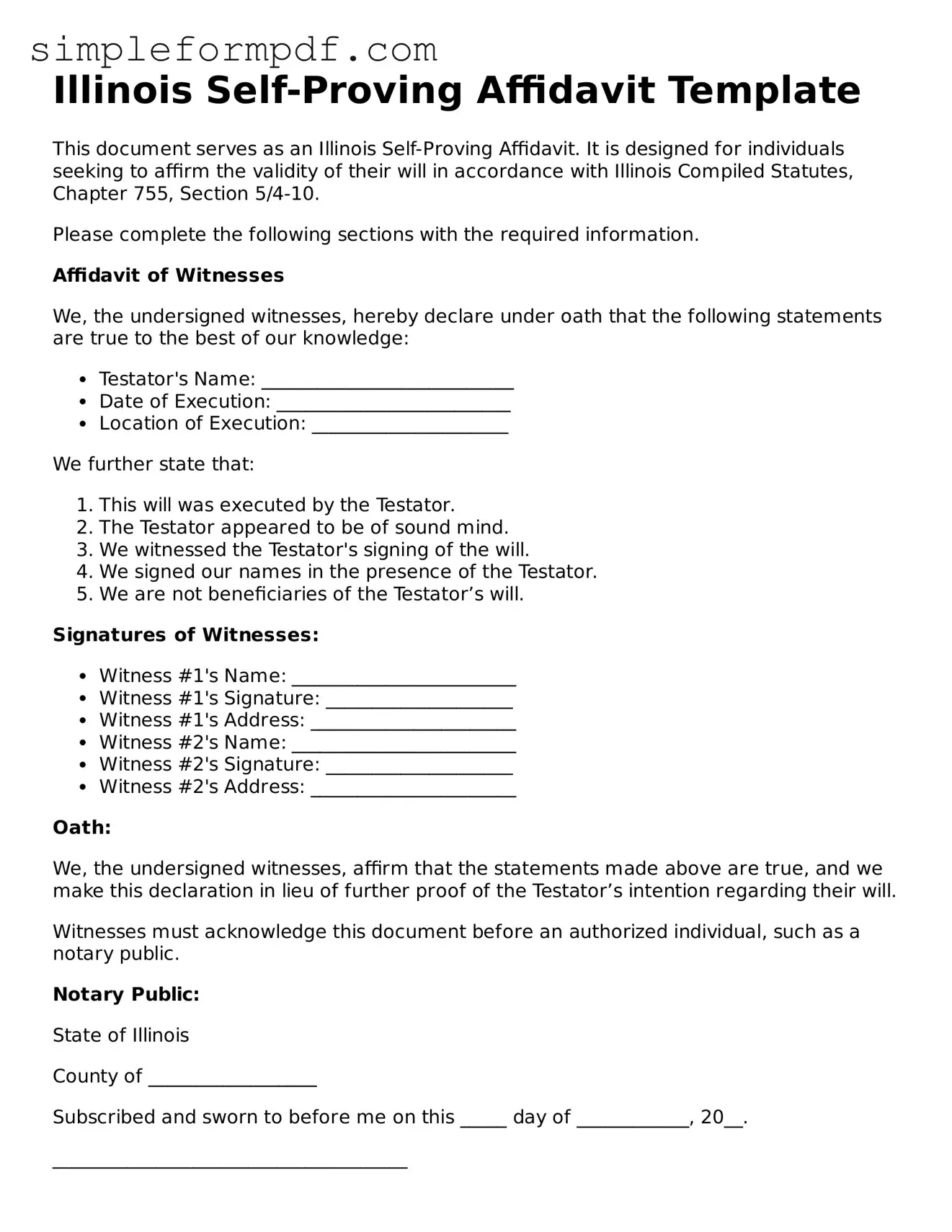Illinois Self-Proving Affidavit Template
This document serves as an Illinois Self-Proving Affidavit. It is designed for individuals seeking to affirm the validity of their will in accordance with Illinois Compiled Statutes, Chapter 755, Section 5/4-10.
Please complete the following sections with the required information.
Affidavit of Witnesses
We, the undersigned witnesses, hereby declare under oath that the following statements are true to the best of our knowledge:
- Testator's Name: ___________________________
- Date of Execution: _________________________
- Location of Execution: _____________________
We further state that:
- This will was executed by the Testator.
- The Testator appeared to be of sound mind.
- We witnessed the Testator's signing of the will.
- We signed our names in the presence of the Testator.
- We are not beneficiaries of the Testator’s will.
Signatures of Witnesses:
- Witness #1's Name: ________________________
- Witness #1's Signature: ____________________
- Witness #1's Address: ______________________
- Witness #2's Name: ________________________
- Witness #2's Signature: ____________________
- Witness #2's Address: ______________________
Oath:
We, the undersigned witnesses, affirm that the statements made above are true, and we make this declaration in lieu of further proof of the Testator’s intention regarding their will.
Witnesses must acknowledge this document before an authorized individual, such as a notary public.
Notary Public:
State of Illinois
County of __________________
Subscribed and sworn to before me on this _____ day of ____________, 20__.
______________________________________
Notary Public Signature
My commission expires: _______________
